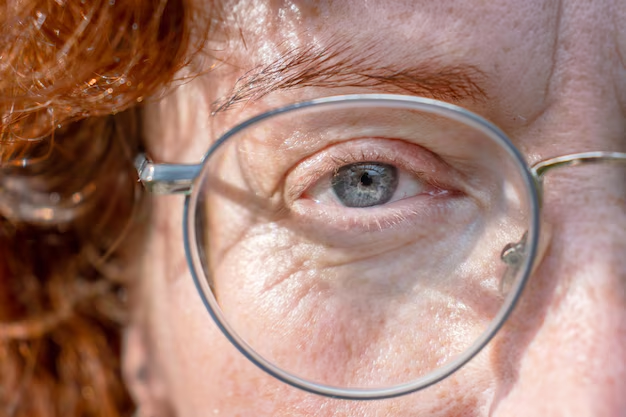Understanding Vision with Cataracts: A Comprehensive Insight
Imagine looking through a fogged-up window or trying to navigate on a misty morning. This might offer a glimpse into the visual experience of someone living with cataracts. Cataracts, a common condition affecting many individuals worldwide, bring about changes in vision that can greatly impact daily life. In this article, we delve into the question: Can you see with cataracts? We will explore this topic from various angles, offering practical insights and helpful information.
🌫️ What Are Cataracts?
Cataracts are a clouding of the eye's natural lens, which is normally clear. This clouding occurs due to the clumping of proteins within the lens, leading to vision impairment. Cataracts typically develop slowly and can affect one or both eyes. For most people, cataracts are a part of aging, but other factors such as trauma, certain medications, and underlying health conditions can hasten their development.
Types of Cataracts
Understanding the different types of cataracts helps in grasping how they affect vision:
- Nuclear Cataracts: Develop at the center of the lens and may initially improve near vision before impairing both near and distance vision.
- Cortical Cataracts: Affect the lens's edges and gradually extend toward the center, causing problems with glare and night vision.
- Posterior Subcapsular Cataracts: Form at the back of the lens and typically affect near vision and the ability to see in bright light.
- Congenital Cataracts: Are present at birth or develop shortly thereafter, often due to genetic factors or infections during pregnancy.
👁️ How Do Cataracts Affect Vision?
To answer the central question—Can you see with cataracts?—it's important to consider the spectrum of changes in vision that cataracts can cause. The impact on sight can vary greatly depending on the cataract type, its progression, and the person's overall eye health.
Common Symptoms
People with cataracts might experience a wide range of symptoms, including:
- Blurry Vision: Objects at all distances can appear blurry or out of focus.
- Difficulty with Night Vision: Glare from headlights and streetlights makes night driving challenging.
- Sensitivity to Light and Glare: Bright sunlight or indoor lighting may cause discomfort or glare.
- Fading or Yellowing of Colors: Colors might appear less vibrant.
- Frequent Prescription Changes: A need for regular updates to glasses or contact lenses prescriptions.
Can You Navigate Daily Life?
Even with cataracts, many people can continue daily activities, though adjustments may be necessary. The ability to see with cataracts depends heavily on the severity of the clouding and the parts of the lens affected:
- Mild Cataracts: With mild cataracts, vision might still be relatively clear most of the time. Proper lighting and corrective lenses might compensate for the clouding.
- Advanced Cataracts: As cataracts progress, the clouding becomes denser, leading to significant reduction in vision clarity. Daily tasks requiring fine detail or depth perception can become incredibly challenging.
🔍 Diagnosing Cataracts
An essential step in understanding and managing cataracts is diagnosis. Regular eye exams are crucial, especially as one ages, for early detection of cataracts and other eye conditions.
The Examination Process
An eye care professional will perform a comprehensive eye examination that typically includes:
- Visual Acuity Test: Measures how well you can see at various distances.
- Dilated Eye Exam: The dilation allows for a detailed examination of the lens and the back of the eye.
- Tonometry: Measures the pressure inside the eye.
- Slit-Lamp Examination: Provides a magnified view of the eye's structures, revealing even minor cataracts.
🧭 Managing Vision with Cataracts
Living with cataracts involves adapting to the changes in vision while seeking ways to maintain quality of life.
Non-Surgical Adjustments
While the definitive treatment for cataracts is surgical removal, certain adaptations can help manage symptoms in the meantime:
- Improving Lighting: Ensure your home is well-lit to reduce strain.
- Using Magnifying Devices: For reading and close-up tasks, magnifiers can enhance clarity.
- Glare-Reducing Glasses: Special lenses can help minimize glare from lights.
- Regular Eye Exams: Keep track of vision changes and evaluate the need for surgical intervention.
⚕️ Cataract Surgery: A Path to Clear Vision
Once cataracts begin to significantly impair vision, surgical intervention often becomes necessary. Cataract surgery is one of the most common and successful procedures performed today.
The Surgical Process
During cataract surgery, the cloudy lens is removed and replaced with a clear artificial lens. The procedure is typically fast, taking about 15 to 30 minutes, and is performed on an outpatient basis.
Benefits and Considerations
- Restored Vision: Most individuals experience a significant improvement in vision clarity.
- Safe and Effective: Cataract surgery has a high success rate with minimal risks.
- Customizable Lenses: Artificial lenses can be tailored to correct other vision issues, such as astigmatism or presbyopia.
📝 Summary and Key Takeaways
Here's a quick visual summary to help you remember the essentials:
👁️ Cataracts:
- Clouding of the eye's lens, affecting vision
- Types include nuclear, cortical, posterior subcapsular, and congenital
🌈 Symptoms & Impact:
- Blurry vision, night driving challenges, sensitive to glare
- Color perception fades, frequent need for prescription updates
🔎 Diagnosis & Monitoring:
- Essential to track progression, understand vision limitations
- Comprehensive exams help determine severity and treatment timing
🧭 Managing Vision:
- Non-surgical methods include better lighting, magnifiers, glare-reducing lenses
- Surgery recommended when cataracts hinder daily activities
🔗 Surgery Benefits:
- Restores clarity, safe with high success rate
- Customizable artificial lenses available
Understanding cataracts and their effects on vision can significantly empower individuals to make informed decisions about managing their eye health. While cataracts naturally evolve with age, early recognition and management can help maintain quality of life until more definitive treatments, such as surgery, might be required. If you're living with or suspect you may have cataracts, regular consultations with an eye care professional will guide you towards the best course of action.
